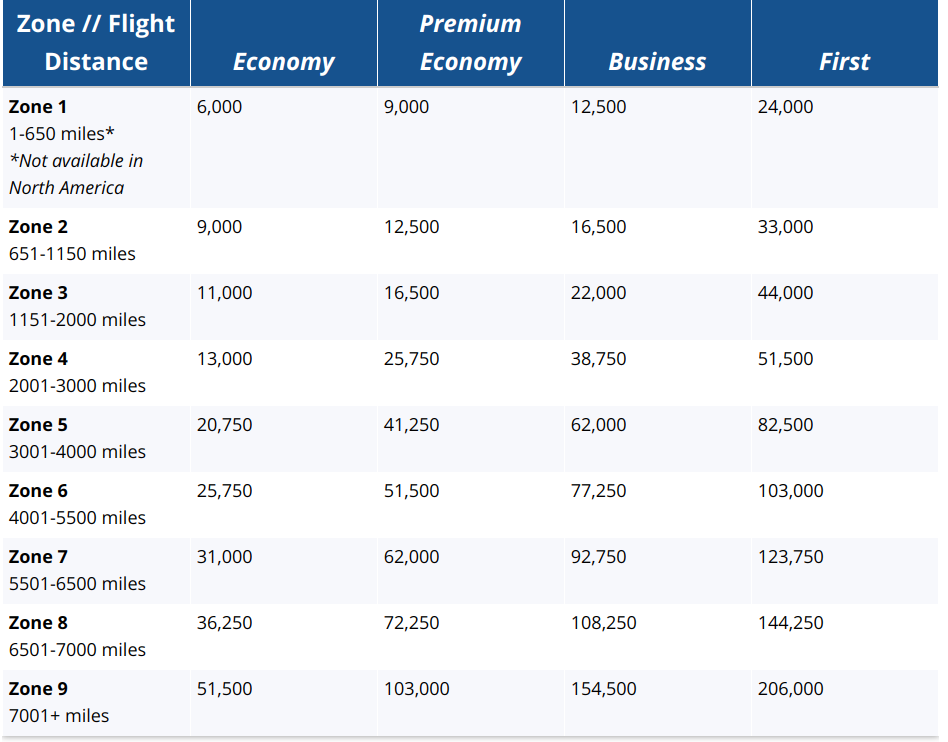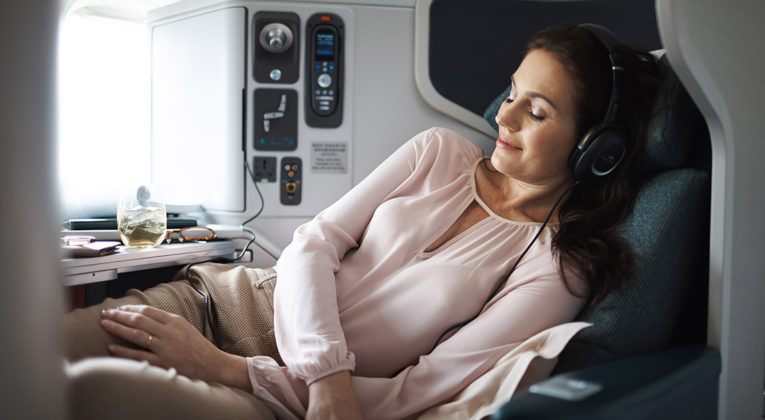Some links to products and partners on this website will earn an affiliate commission.
BA’s new Avios partner award chart has been live since yesterday morning, and it’s more or less what we expected. Check it out below:

At the lower end, the increases are substantial in percentage terms, with Zone One prices rising by 33%-39% depending on the Class of travel – Business Class being the hardest hit. Zones 2 and 3 see rises of between 10%-20%.
For longer flights though, the changes are negligible, with increases of just 3%-4%.
Note that there is different pricing for flights of less than 651 miles which start or end in the USA. The rates there are as follows:
- Economy: 7,500
- Business: 15,000
- First: 30,000
Bottom line
Overall, I have to say that this isn’t as bad as I initially feared when BA first released its incredibly cryptic notice about the changes last month. Any devaluation is bad of course, but my main feeling towards these changes is actually puzzlement – and for a number of different reasons:
- Given that the changes aren’t horrific, why didn’t BA just share the details openly in advance?
- What’s going on with the weird, uneven, multiples for the different classes of travel? – Eg. Zone 4 Economy is 13,000 Avios, but Zone 4 Business Class is 38,750 rather than 39,000.
- What was the thinking behind changing just the partner rates anyway? It creates another layer of complexity for BA Executive Club members, without any (obvious) significant benefit to BA. Yes, the higher rates will help save BA a few quid, but I doubt it adds up to very much.
Answers/thoughts on a postcard please (or in the comments anyway!)






Thanks very much for this Joe. I don’t know the answer to your first and third questions, but, I think I know the answer to your second question – namely that the odd figures seem to be because an underlying calculation has been rounded up to the nearest 250 miles.
The underlying calculation seems to be as follows:
For Zones 1-3, Premium Economy is generally 1.5 x Economy miles, Business is double the miles, and First is quadruple the miles.
For Zones 4-9, Premium Economy is always double the Economy miles, Business is triple the miles, and First is quadruple the miles.
Zones 1-3 are based on a multiplier of 5.0, pegged at the following notional miles per zone: Zone 1 = 1200 miles, Zone 2 = 1650, and Zone 3 = 2200.
(However, note that within Zone 2, there’s an exception for Economy, namely that the notional miles for Economy is instead 1800 miles – which explains why the other Zone 2 numbers appear not to multiply as you would expect.)
Zones 4-9 are instead based on a multiplier of 5.15, pegged at the following notional miles per zone: Zone 4 = 2500 miles, Zone 5 = 4000, Zone 6 = 5000, Zone 7 = 6000, Zone 8 = 7000, and Zone 9 = 10000 miles.
For example, a Zone 4 award in Business = 2500 miles x 5.15 overall multiplier x 3 business multiplier = 38625 miles, which is then rounded up to the nearest 250 miles, namely 38750 miles.
Finally, why did BA use the unusual multiplier of 5.15? I’m guessing it’s simply because it represents a 3% increase over 5.0, which was their previous multiplier for Peak pricing in their Avios partner award chart.
Love the analysis Richard – cheers! The system does seem rather unnecessarily convoluted though, which again leads me right back to question 3…(for what it’s worth, my suspicions re that are very similar to Craig’s).